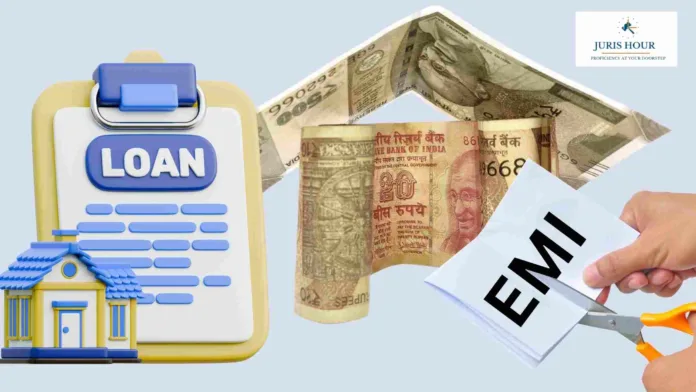With the Reserve Bank of India keeping the policy repo rate steady at 5.50%, borrowers haven’t lost all leverage — new central-bank directions plus a range of lender options mean many home-loan EMIs can still be trimmed without emotional gut-surgery.
A game-changer arrived in July 2025 when the RBI issued the Pre-payment Charges on Loans Directions, 2025, limiting or banning pre-payment/foreclosure charges for many floating-rate loans and laying down a uniform regime that will apply from January 1, 2026. That makes part-prepayments, balance transfers and early foreclosures far less costly for a large class of borrowers.
Table of Contents
Here’re the best, practical ways to lower your monthly EMI — what they do, when they make sense, costs to watch, and an arithmetic example so you can judge for yourself.
1) Refinance (home-loan balance transfer) — the single most common move
What it is: move the outstanding loan to another lender offering a lower interest rate or better terms (or ask your existing bank to match). The new lender pays off the old loan; you continue with a (usually) lower EMI.
Why it helps: a small cut in rate — often 0.3–0.5 percentage point or more — compounds over long tenures into sizeable EMI and interest savings. Financial advisers routinely use a rule-of-thumb: consider transfer when the rate gap is at least ~0.3–0.5% and you still have many years left on the loan.
Typical costs to include in your calculation: processing fee (typical market range 0.25%–2% of outstanding), valuation/legal charges, stamp/registration (if required by the new lender), any foreclosure charge from the current lender (for some fixed-rate loans), and incidental fees. Compare net savings after these costs.
When it makes sense: early-to-mid stage of the loan (interest component is still large), a meaningful rate gap, and when transfer costs are small relative to the projected interest savings.
Quick worked example (real arithmetic so you can judge)
- Outstanding principal: ₹30,00,000
- Remaining tenure: 15 years (180 months)
- Current rate: 9.00% p.a. (monthly r = 0.09/12) → EMI ≈ ₹30,428
- Offer from new lender: 8.00% p.a. → EMI ≈ ₹28,670
- Monthly saving: ≈ ₹1,758
- Total interest (remaining tenure) — old rate: ≈ ₹24,77,040
- Total interest (remaining tenure) — new rate: ≈ ₹21,60,521
- Gross interest saved over the remaining life: ≈ ₹3,16,518
(These EMIs & totals are computed using the standard EMI formula — you can reproduce them using bank EMI calculators such as SBI’s tool.)
Now factor transfer costs: if transfer/valuation/legal costs are ₹40,000 (example), net savings ≈ ₹2.76 lakh over the remaining tenure — and EMI is lower from month one. Always run the math with your exact fees and remaining tenure before deciding.
2) Part-prepayment or lumpsum repayment — pay down principal when you can
How it lowers EMI: a lump sum reduces outstanding principal immediately; you then ask the lender to either (a) reduce EMI and keep tenure same or (b) keep EMI same and shorten tenure (which saves more interest). Which option to choose depends on cash-flow priorities.
New RBI context: prepayment rules have become borrower-friendly for floating-rate loans under the July 2025 Directions (see earlier citation) — this reduces the penalty barrier to part-prepaying or foreclosing such loans. Still check your loan contract for any fixed-rate prepayment clauses.
Practical tip: if you want to be debt-efficient, keep EMI the same and reduce tenure — the total interest saved is usually larger than choosing to reduce EMI. If you need immediate monthly relief, choose EMI reduction. (Explainers from lenders and finance sites walk through the trade-off.)
3) Extend the loan tenure — immediate relief, longer cost
What it does: lengthening tenure reduces EMI but increases total interest paid. Useful as a short-term cash-flow measure (job change, child education, medical emergency) but expensive long term.
Caveat: lenders usually allow tenure extensions subject to a cap (often up to 30 years overall) and internal approval. Compare the extra interest cost against other options (part-prepayment, repricing, negotiation).
4) Switch between fixed and floating rates (or vice-versa) — timing matters
Why: if market rates fall, floating rates can be cheaper; if volatility rises, fixed rates provide certainty. Many lenders let borrowers switch but may charge a switching fee; RBI has required transparent disclosure of such charges. If your loan is floating now, the July 2025 directions make refinancing and prepayment easier for borrowers.
5) Move to a flexi / OD-linked home loan (overdraft facility) — keep interest only on outstanding balance
Products such as SBI’s MaxGain let you park surplus funds in an OD account linked to your home loan; interest is charged only on the net daily outstanding, which can lower interest cost and effectively lower the EMI burden if you maintain balances. These suits borrowers with irregular income or large cash reserves they don’t want to lock away.
6) Negotiate with your current lender — often underused and low-friction
If your credit score improved, your salary climbed, or the market rate has fallen, call your branch and ask for a rate repricing. Lenders sometimes match competitor offers (especially for good customers). Even a 0.25% cut negotiated in-house can save lakhs over a long loan. Have competing offers and your credit statements ready when you negotiate.
7) Use structured EMIs (step-up, step-down) and top-ups smartly
Step-up EMIs (start lower and increase annually) can ease early career cash flow; top-ups at competitive rates can consolidate higher-cost consumer debt into a lower-cost secured loan — but beware of extending tenure or bundling high-interest personal borrowing into the home loan without a repayment plan.
8) Don’t forget the basics: credit score, documentation and timing
- Maintain a healthy credit score — lenders price loans significantly based on risk/bureau score.
- Keep proofs of income and tax returns ready — better documentation opens room for discounts.
- Use policy windows — lenders sometimes run periodic rate offers around festivals/financial year-end.
Quick decision-checklist (before you act)
- Compute net savings: interest saved − transfer & legal costs = net benefit (use EMI calculators).
- Check loan fine print: lock-in periods, foreclosure charges (for fixed loans), documentation and valuation fees.
- Compare apples to apples: compare effective rates (processing fee included) not only headline rates.
- Consider tenure: if you want long-term interest reduction, prefer reducing tenure over EMI reduction.
- Shop & negotiate: get written offers from 2–3 lenders; use them to negotiate with your current bank.
Bottom line
Even with the RBI holding the repo rate at 5.50% for now, two structural developments make borrower action meaningful in 2025: (a) many lenders have passed earlier cuts to borrowers so base rates are lower, and (b) the RBI’s July 2025 Directions significantly lower the cost-barrier to prepaying/refinancing floating-rate loans from January 2026. For most borrowers the highest-leverage moves are (1) a carefully calculated balance transfer when there’s a clear rate gap, (2) strategic part-prepayments (and choosing tenure vs EMI reduction wisely), and (3) negotiating with your lender. Do the math with your exact numbers (EMI calculators + list of transfer costs) before committing.
Read More: Apple Sued for Allegedly Stealing Trade Secrets to Build Apple Pay

